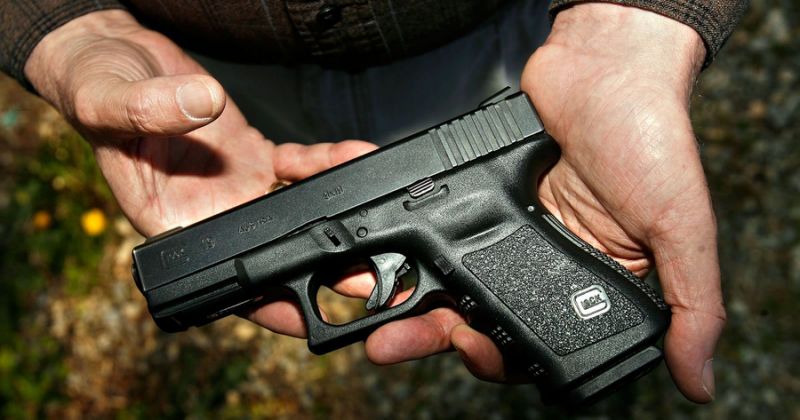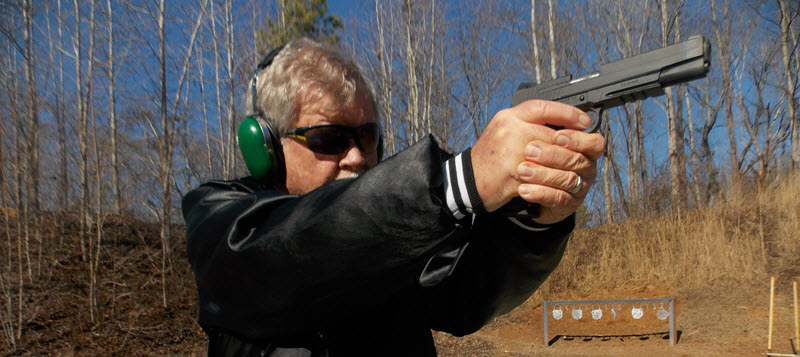A few thoughts from much experience! Read it all HERE

Bob Campbell
Handgun training, more so than most pursuits, is charged with individuality. Special teams and rifle companies move as a unit and exercise strict discipline. They have a plan of action. The handgun is a weapon of opportunity carried to meet the unexpected difficulty. The action is not planned, and the response is reactive.
For many problems, a trained individual will respond with simple reflex. Reflex is sufficient for some problems, but simple movements set the stage for more elaborate responses. Training and movement should be simple and as straightforward as possible.
In education lectures, presentations are directed toward the crowd; handgun training must be on an individual basis. The direction of training, and the line of solution, must be clear. At present, I practice and work hard at keeping myself fit and prepared. As for games and competitions, I am fast becoming more of a pensioner than a participant.
I have engaged in a great deal of training and some competitions. I understand that study of drills, and then execution on the range, is the double route from which proficiency grows. You must hold a physical knowledge of movement and an understanding of the interplay of tactics. Every time you draw the handgun it must be a studied action reverent of the necessary safety involved and the intent of the handgun, which is to save lives.

Practice, practice, practice
When I practice and drill, I am not absorbed in playing the game or the drill, rather, in winning. This means mastering the skills and hitting the target regardless of the requirement. I use a handgun of sufficient power for the task at hand. Ask yourself; does the handgun you deploy have enough power for the work for which it is intended? If possible, a firearm of disproportionate power to the work involved would be better, and that means a rifle or shotgun for home deployment — no concealable handgun has a surplus of power.
For many of us, most of the time we choose a reasonably portable handgun, and this will be the weapon with us when we are attacked. When in the home, choose a shotgun or rifle for far superior hit probability and power. We should not neglect to practice with those firearms. The handgun will become near useless if we do not practice often.
When I train, I use drills centered on common sense and real problems. As an example, while modern science stresses the strength of a straight line, I prefer the Greek idea and stress the strength of the circle. Moving and getting off the X is important. When you convert linear motion to rotational movement, you have accomplished much and that means you will be moving out of the line of fire and moving to a more defensible position.
You must understand that when there is a fight for real; you have to dispense with the range notion of the firing line is forward and the safe line to the rear. The whole area is a firing line and there will be people all around you. Moving constantly is a key to survival. Moving to a good firing position and firing accurately is another key.
Moving Constantly Is a Key to Survival
Training is a perpetual challenge. Substance, process determination, and action are needed. Becoming a formidable shooter is gained by action, not contemplation. The brain and hand unite to produce the desired result. I have been training for a long time on a regular basis. The past 35 years have reinforced the need to study and to learn.
I have prosecuted the inquiry to the best of my ability. A great deal of research and an open mind goes into proficiency at arms. The bottom line is to get the basics right. Hit the target. Then learn movement and seek cover when possible.

As for the handgun, I have come to a sort of New Year’s resolution on my carry guns. As a professional gun writer, I test a lot of handguns. I am something of a gun crank, if not a collector, and enjoy pushing the envelope and discovering how well a firearm performs against another. Reliability is the baseline.
I have deployed several truly exceptional handguns during the past year and have my favorites for different uses. These include a Springfield Armory Mil-Spec in .38 Super, the Les Baser Concept VI .45, Dan Wesson Guardian .45, SIG TACOPS .45, SIG C3 .45, SIG Emperor Scorpion 10mm, SIG P225 A 9mm, and Colt Series 70 .45. My backups include a pair made in 1962, the Colt Detective Special and Colt Cobra, both in .38 Special, and the Kimber K6s .357 Magnum.
Then there is the Ruger GP100 7-shooter, because everyone needs a magnum. And you need a Glock, too; so I have the Glock 19X. These are fine handguns but too damn many. I enjoy each and try to keep my skill level up but with testing other handguns and teaching it isn’t easy or perhaps even possible.
This year, I am going to carry only the handguns that I fire and use the best. This means the 1911. I am narrowing it down to the most credible choices. So far, it looks like the SIG C3 or Dan Wesson for daily carry. When the pretty girl and I visit the ‘wild, out of the way places’ it will be the SIG TAC OPS with +P loads. That is enough to master.
What are your goals when you practice? Share them in the comment section.








